Spring and summer bring a different State of Affairs. While respiratory viruses, like flu and RSV, have largely receded, we face a plethora of other health annoyances and potential threats.
The common cold is here
Feeling sick? Lots of children are testing positive for viruses that cause common cold symptoms, which means adults are feeling it, too. This is not abnormal for this time of year. We don’t know why these typically follow flu and RSV season.
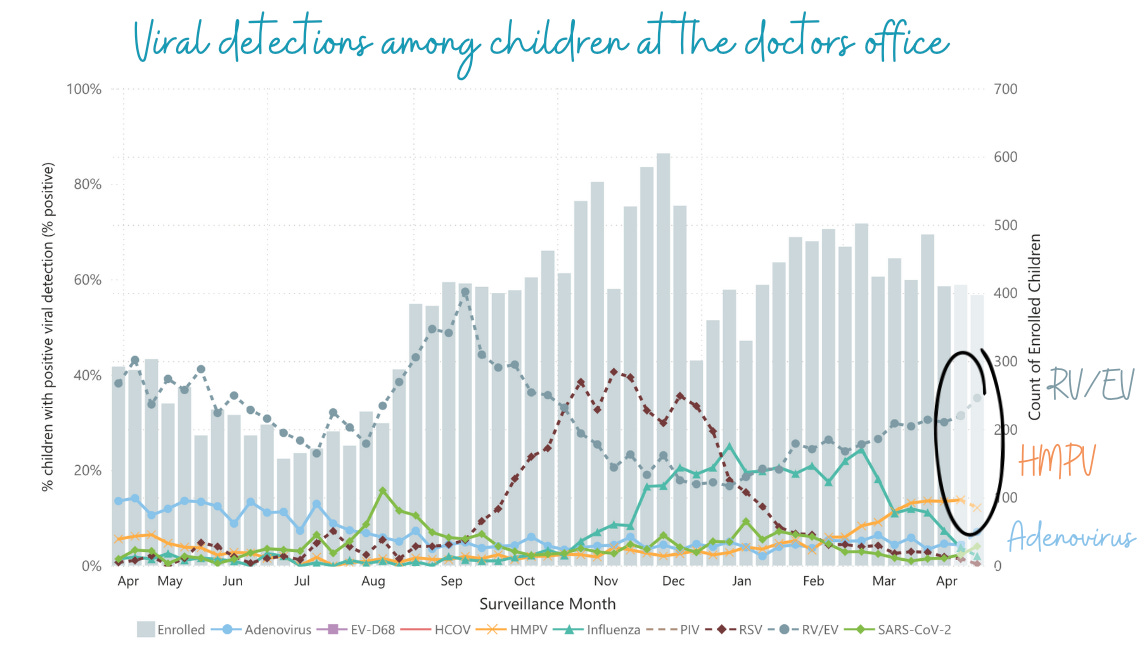
Tick bites at a high, too
Ticks thrive in the warm weather and lush vegetation of spring. Ticks can carry pathogens that cause over a dozen diseases, including Lyme disease. Lyme disease often causes flu-like symptoms and, if left untreated, can lead to more serious complications such as neurological and cardiac issues.
Today, emergency room department visits for tick bites are high. This seems to be a middle-of-the-road season compared to other years. Regardless, by the end of the year, more than 500,000 people will be diagnosed and treated for Lyme disease alone.
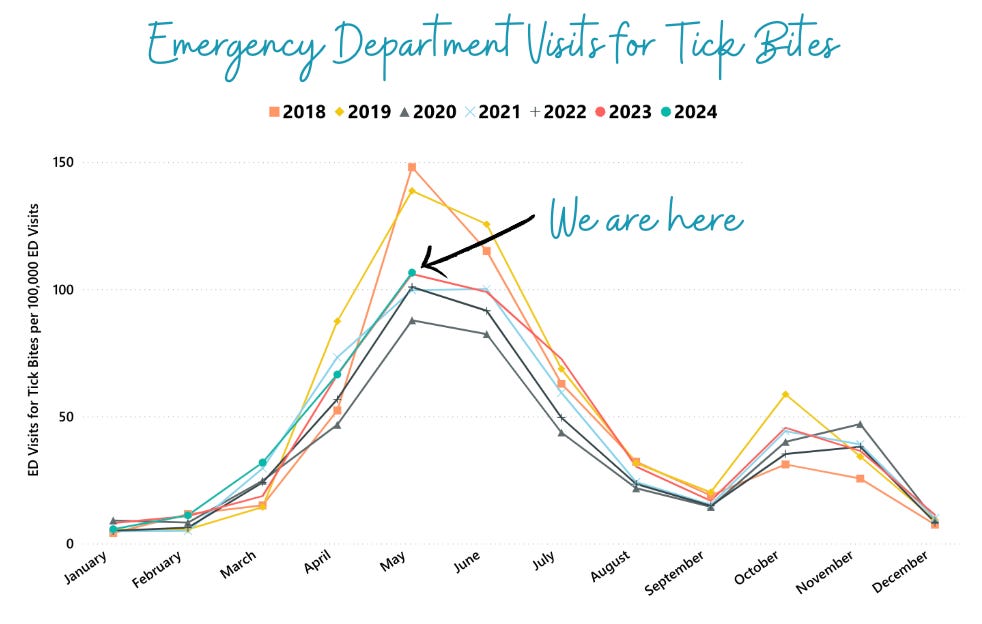
Not all ticks carry disease, and the risk of contracting a tick-borne illness depends on the tick species, geographic location, and how long the tick is attached. In general, tick diseases are more concentrated in the Northeast.
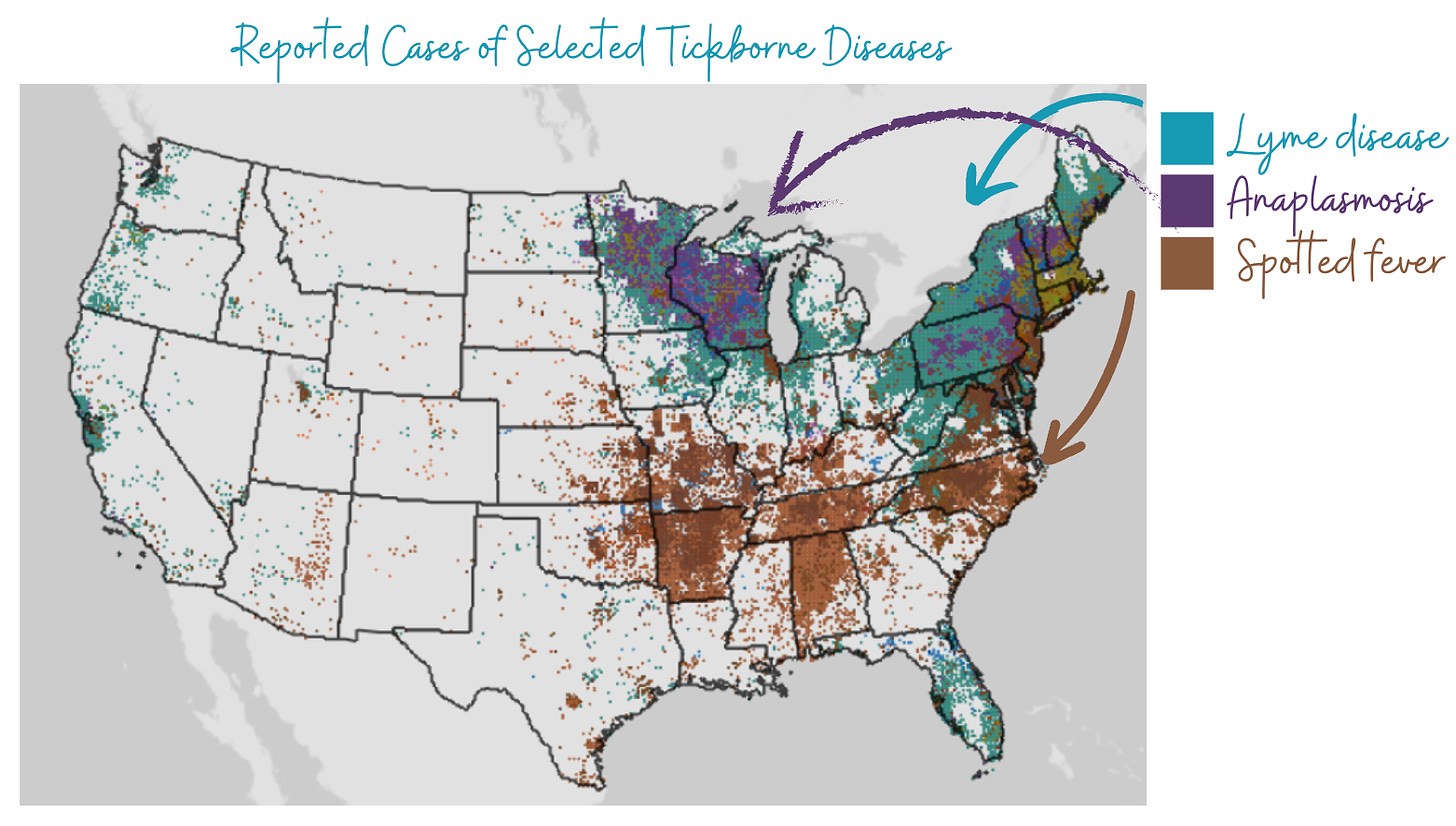
You can do many things to protect yourself from ticks, such as applying DEET or picaridin, treating clothing and gear with products containing 0.5% permethrin, and conducting thorough tick checks after outdoor activities.
Heat-related illnesses
This summer is slated to be a hot one, which means more risk to population health. Last summer, emergency room visits for heat-related illnesses reached an all-time high.
The National Oceanic and Atmospheric Administration (NOAA) and CDC created a health risk score taking into account temperature, humidity, and other metrics that impact health. The risk score ranges daily from “No risk” to “Extreme” heat risk.
This was the first week all five risk categories showed their colors in the U.S. (Enter your zip code here).
There are a few pockets of “extreme heat” in Texas.
Eyes are specifically on Houston this week. Although it’s a “moderate” risk, thousands of people are without electricity thanks to the tornado. Non-working AC is one of the main causes of heat-related deaths each year.
People sensitive to heat, such as pregnant women, kids with asthma, heart disease, and older adults, should start paying attention (and take action) on orange (moderate) days. Everyone should take action on red (major) or magenta (extreme) days. A few hot tips:
Many people don’t know their medications can go bad in a hot car.
Using a fan when the indoor heat is 90+ degrees can do more harm than good.
H5N1 is still the talk of the town, but risk remains low
We have another human case in Michigan. Another farmworker tested positive after direct contact with infected cows. He has mild symptoms—infected red eyes. (This is a common symptom because our eyes have bird flu receptors.) Another human case is not unexpected, given the close contact with animals and the scale of the outbreak. I am almost certain there are more human cases, just undetected.
H5N1 continues to spread among animals. USDA has reported 15 more infected dairy herds across 9 states, for 56 infected herds. A few cats in South Dakota have tested positive without any connection to cows or poultry, which is concerning. Given limited testing on animals and humans, we still don’t know how large the “true” outbreak is.
USDA is reimbursing farmers for costs associated with H5N1 in hopes of incentivizing reporting and cooperation. The reimbursement is a start but doesn’t come close to the actual costs accrued. A first-hand account from a farmer shows this virus impacts cows much more dramatically than reported.
CDC now has a wastewater dashboard for Flu A, which, given that we are out of flu season may suggest where high levels of H5N1 are hiding. We’re seeing just how complicated these signals may be, though. For example, CA has high flu A signals, but local health departments say it’s not due to H5N1. We think these signals are from animal waste, not humans.
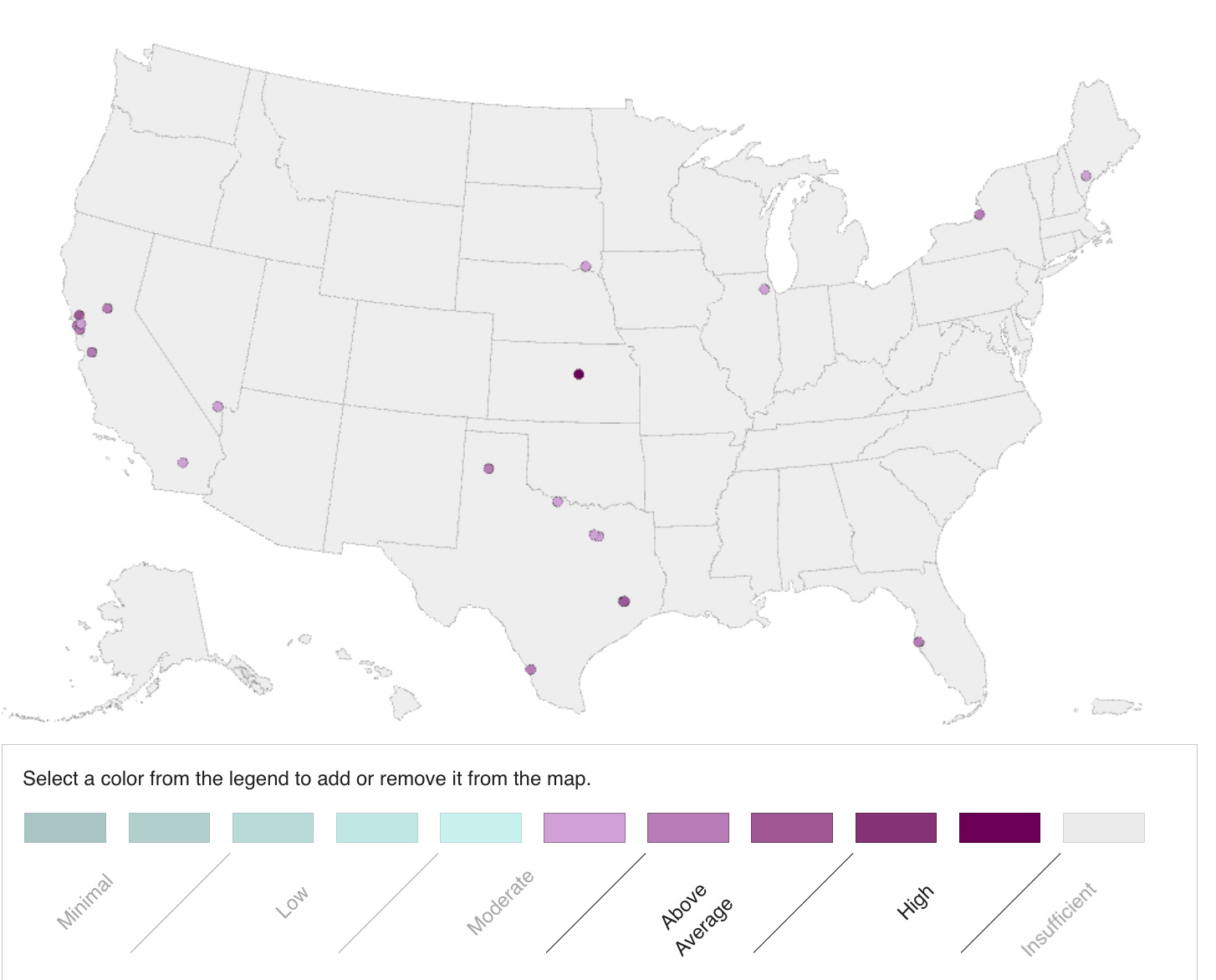
Covid-19: Remain low
All indicators—ED visits, deaths, wastewater—are at an all-time low. If you squint, wastewater levels are creeping up in the West. This is mainly thanks to the latest Covid-19 variants called FLiRT. Given that there are only two mutations on the spike protein (compared to 30+ during the first Omicron tsunami), we don’t think this will cause a massive wave. It may just be a blip.
Other countries, like Singapore, are seeing a dramatic increase in cases and hospitalizations. The U.K. is also seeing an increase but starting from a low level. Given the different immunity landscapes, cross-country comparisons are nearly impossible these days.
Mpox (Monkeypox): Increasing in NYC and IL
Cases are increasing again in the States. As of mid-April 2024, there were already more than double the cases compared to last year. New York City and Illinois are among the most affected areas. These cases are caused mainly (if not all) by Clade II, the less severe strain.
Why are we seeing cases again? Recent studies show immunity from the mpox vaccine waning, particularly in individuals without prior smallpox vaccination.
This suggests a potential need for booster doses, but no official recommendation for a booster has been made.
Despite waning immunity, vaccines are still helping reduce illness severity.
The Democratic Republic of the Congo (DRC) is experiencing its worst documented outbreak of the more severe Clade I strain, with over 19,900 suspected cases and 970 deaths, mostly among children under 15. To our knowledge, this strain hasn’t touched down in the U.S. yet.
Bottom line
Other than ticks and the common cold, enjoy the lull in the U.S. In my opinion, it’s the best time of year!
Love, YLE
This post was a team effort at YLE crafted by Andrea Tamayo, Sarah Gillani, Jessica Steier, and Katelyn Jetelina. Our main goal is to “translate” the ever-evolving public health science so that people will be well-equipped to make evidence-based decisions. This newsletter is free thanks to the generous support of fellow YLE community members. To support this effort, subscribe below:





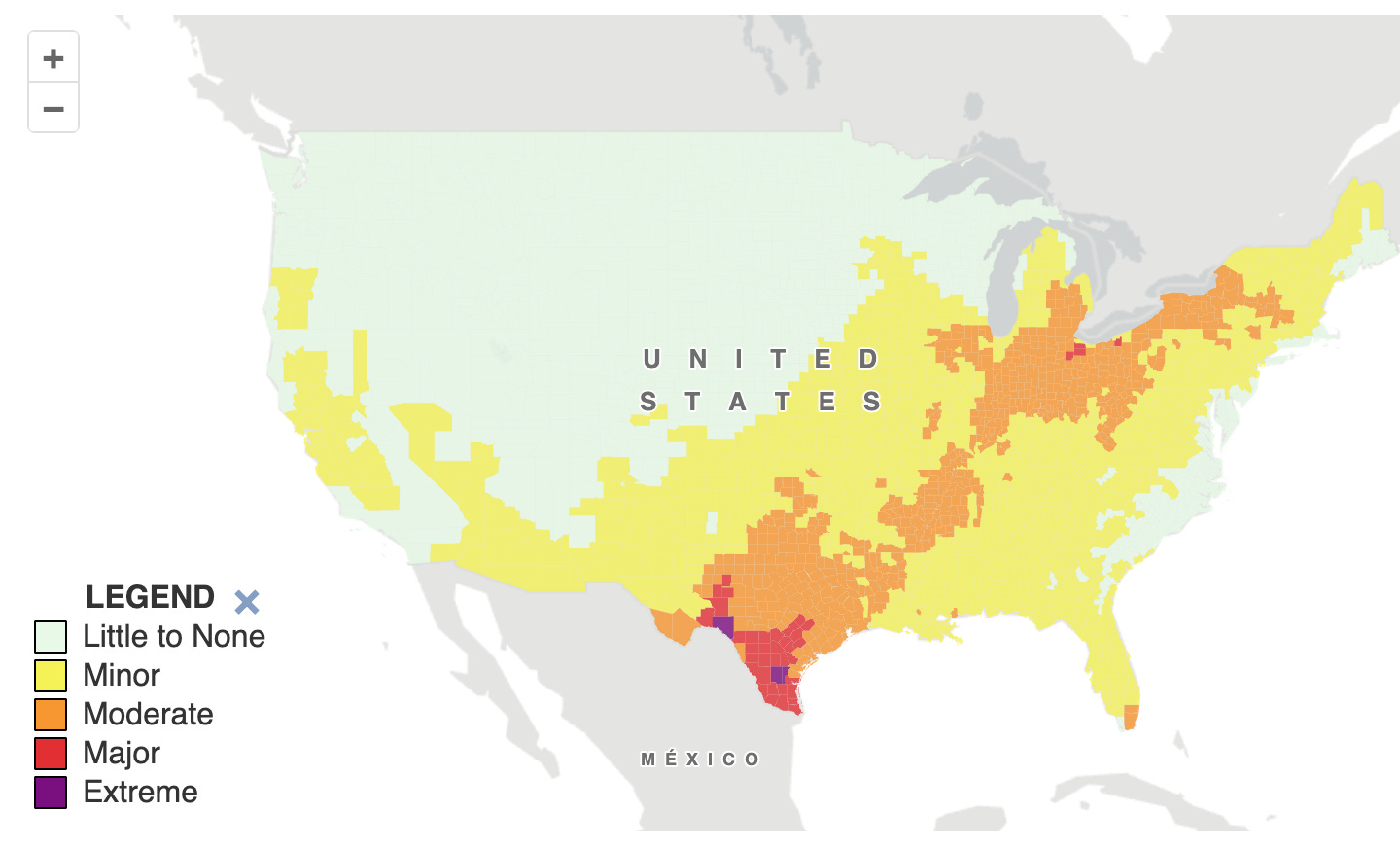
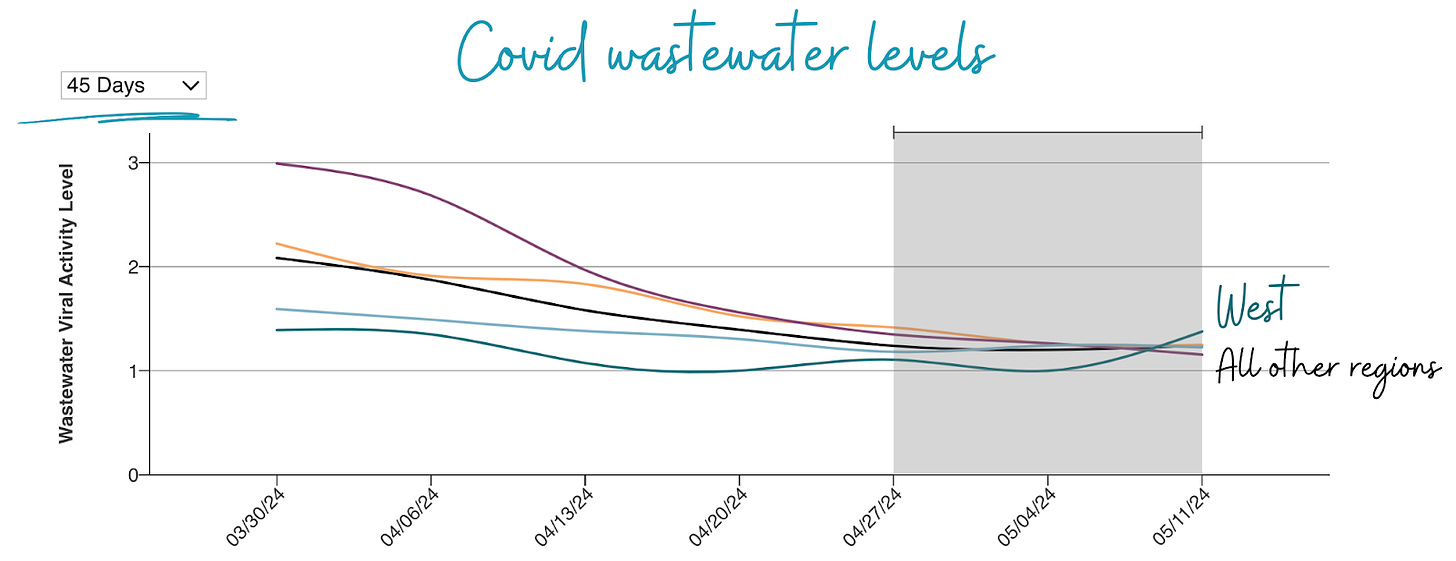
I really appreciate these summaries.
Thank you for mentioning ticks. We have lots of problems with Alpha-Gal Syndrome in the South.